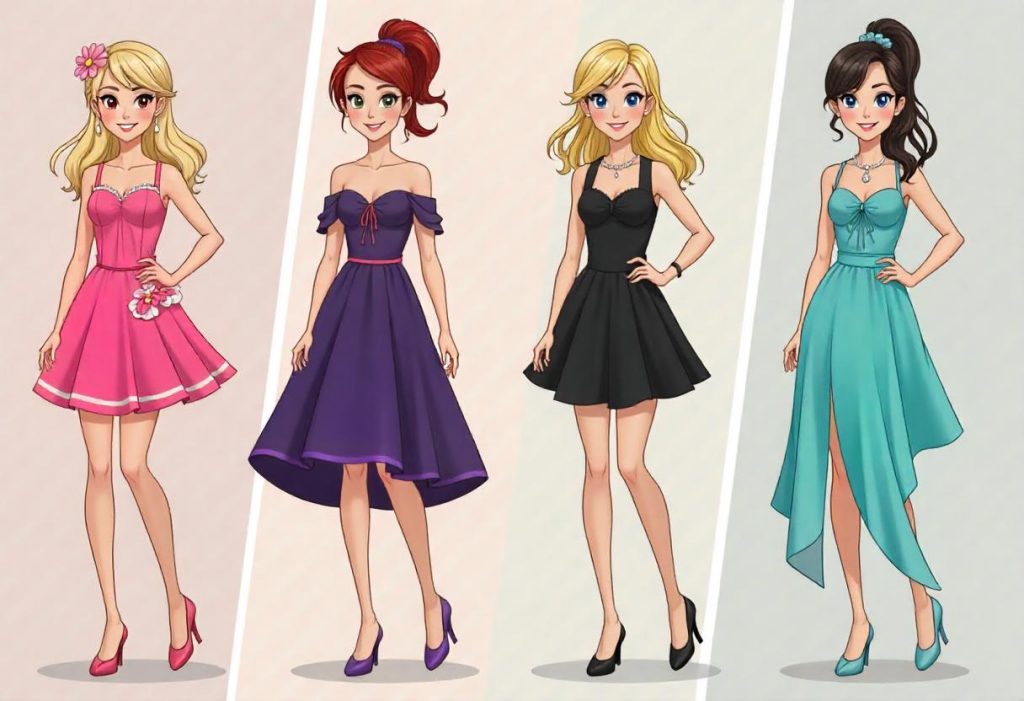Dressing to impress is more than just throwing on stylish clothes—it’s about understanding dress codes, personal style, and the message your outfit conveys. Whether you’re attending a formal event, a business meeting, or a casual outing, following the right dress code ensures you make the best impression.

In this guide, we’ll break down different dress to impress codes, from business formal to smart casual, and provide styling tips, do’s and don’ts, and outfit ideas to help you dress confidently for any situation.
Contents
Understanding the Importance of Dress Codes
1. Why Dress Codes Matter
Dress codes exist to set expectations and ensure people dress appropriately for different occasions. Whether it’s a corporate office, wedding, or party, following the right dress code shows respect, professionalism, and an understanding of the event’s tone.
Some key reasons why dress codes matter include:
- Professionalism: In a business setting, dressing well enhances credibility.
- Respect for the Occasion: Weddings, funerals, and formal events require appropriate attire.
- Social Confidence: When you look the part, you feel more confident and make a lasting impression.
- Networking & First Impressions: The way you dress can impact how people perceive you in both social and professional circles.
Decoding Dress to Impress Codes
1. Business Formal
What It Means
Business formal is the highest level of professional attire, typically required for corporate meetings, boardroom presentations, and high-profile networking events.
For Men
- Dark-colored suits (black, navy, or charcoal)
- Crisp, button-down dress shirts in neutral colors
- Ties in classic patterns or solid colors
- Polished dress shoes (oxfords or loafers)
- Minimal accessories (watch, cufflinks, belt)
For Women
- Tailored pantsuits or skirt suits
- Blouses in neutral or pastel shades
- Closed-toe heels or elegant flats
- Minimal jewelry and structured handbags
2. Business Casual
What It Means
Business casual is a more relaxed version of business formal, perfect for office environments, casual meetings, and networking events.
For Men
- Dress pants or chinos with a button-down shirt
- Blazers (optional)
- Loafers or dress shoes (no sneakers)
- Belts and minimal accessories
For Women
- Dress pants, skirts, or tailored dresses
- Blouses or structured tops
- Flats, loafers, or low heels
- Subtle jewelry and professional handbags
3. Smart Casual
What It Means
Smart casual is polished yet relaxed, ideal for dinner dates, casual business meetings, and semi-formal social events.
For Men
- Dark jeans or chinos with a polo or button-down shirt
- Blazers or cardigans for an extra touch of sophistication
- Dress shoes, loafers, or stylish sneakers
For Women
- Elegant blouses or fitted tops with tailored pants
- Dark jeans paired with a structured blazer
- Heeled boots, stylish flats, or sleek sneakers
4. Cocktail Attire
What It Means
Cocktail attire is semi-formal, perfect for weddings, evening parties, and special occasions. It’s dressier than business casual but not as formal as black tie.
For Men
- Well-fitted suits in dark or jewel tones
- Dress shirts with or without a tie
- Leather dress shoes or loafers
- Stylish accessories like watches or pocket squares
For Women
- Cocktail dresses, midi dresses, or elegant jumpsuits
- Dressy heels or sophisticated flats
- Statement jewelry and chic clutches
5. Black Tie
What It Means
Black tie is one of the most formal dress codes, typically required for gala events, high-end weddings, and award ceremonies.
For Men
- Black tuxedo with a white dress shirt
- Bow tie and polished dress shoes
- Cufflinks and a sleek watch
For Women
- Floor-length gowns or formal cocktail dresses
- High heels and sophisticated jewelry
- Elegant updos or styled hair
6. Casual Attire
What It Means
Casual attire is relaxed and comfortable, perfect for weekends, brunches, and casual outings. However, dressing casually doesn’t mean dressing sloppy.
For Men
- Well-fitted jeans or chinos
- T-shirts, polo shirts, or casual button-downs
- Sneakers, loafers, or casual boots
For Women
- Jeans, leggings, or casual dresses
- T-shirts, blouses, or oversized sweaters
- Sneakers, flats, or ankle boots
How to Dress to Impress for Any Occasion
1. Dressing for Work and Professional Settings
- Always dress slightly more formal than expected to show professionalism.
- Stick to neutral tones and structured silhouettes for a polished look.
- Invest in quality shoes and accessories—they elevate your outfit instantly.
2. Dressing for Social Events
- Check the dress code in advance to avoid being underdressed or overdressed.
- For cocktail and black tie events, opt for classic, timeless pieces.
- If in doubt, dress one step above casual to stay polished.
3. Dressing for First Impressions
- First impressions are often based on appearance—dress appropriately for the occasion.
- Confidence is key: wear outfits that make you feel comfortable and empowered.
- Grooming matters: well-maintained hair, clean shoes, and neat outfits create a put-together look.
Common Mistakes to Avoid
- Ignoring the Dress Code – Always dress appropriately for the occasion to avoid looking out of place.
- Wearing Wrinkled or Ill-Fitting Clothes – Properly tailored outfits look more polished and expensive.
- Overloading on Accessories – Stick to one or two statement pieces rather than over-accessorizing.
- Wearing Uncomfortable Clothes – If you’re not comfortable, it will show in your body language.
- Neglecting Footwear – Shoes can make or break an outfit, so invest in stylish yet comfortable options.
Final Thoughts
Mastering dress to impress codes is all about understanding the occasion, dressing appropriately, and feeling confident in your style. Whether you’re aiming for a professional, elegant, or casual look, following these guidelines will ensure you always make the right impression.
Next time you step out, dress with intention, exude confidence, and let your outfit speak for itself!